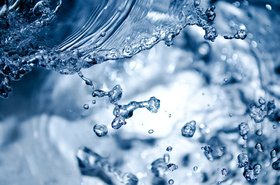Additional Ventures, founded by a former Meta CTO, has spun out an organization which aims to capture carbon in the oceans.
The $50 million Carbon to Sea research program aims to boost ocean alkalinity enhancement (OAE), a means to remove carbon dioxide from the atmosphere by encouraging it to dissolve in the ocean. It has been set up by Additional Ventures, a non-profit set up by Mike Schroepfer, who worked at Facebook from its early days, and was CTO for nine years from 2013 to 2022.
The initiative has already committed $23 million of grants to researchers, listed on the Carbon to Sea site.
Even if the human race manages to reach its target to reduce emissions, the human race needs to remove hundreds of billions of tons of CO2 from the atmosphere this century, according to the UN's Intergovernmental Panel on Climate Change (IPCC).
Direct air carbon capture systems run by organizations such as Climeworks, CarbonCapture, and Heirloom Carbon are offering to remove carbon from the atmosphere for a price, and are seen as the only way for organizations to cancel stubborn emissions in their supply chain and achieve net-zero. Microsoft, in particular, has invested in all three of these.
However, mechanical direct air carbon capture systems require green electricity, and produce emissions of their own, leading to increasing interest in removal techniques that use natural phenomena, such as tree planting.
Carbon capture research has increasingly looked at the oceans, which already absorb more carbon than the world's forests. The ocean already captures carbon, when alkaline rocks (e.g. carbonates) erode and are washed into the sea, where they neutralize harmful acid pulling more CO2 from the air, adding up to around a gigaton of carbon removed each year.
Microsoft (once again) has invested in Running Tide, which plans to seed buoys with biomass that can capture carbon as it grows, before sinking into the ocean.
OAE aims to boost this natural process, with the goal of finding if the process can capture an additional gigaton with human intervention. It will carry out activities including field trials in the ocean, and advocating for policies that make permitting easier for experiments in the area. It will also push for more public funding for the research.




